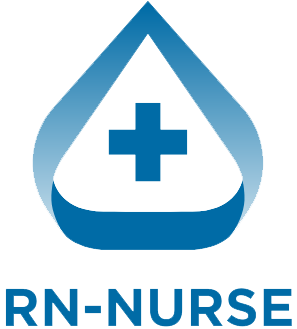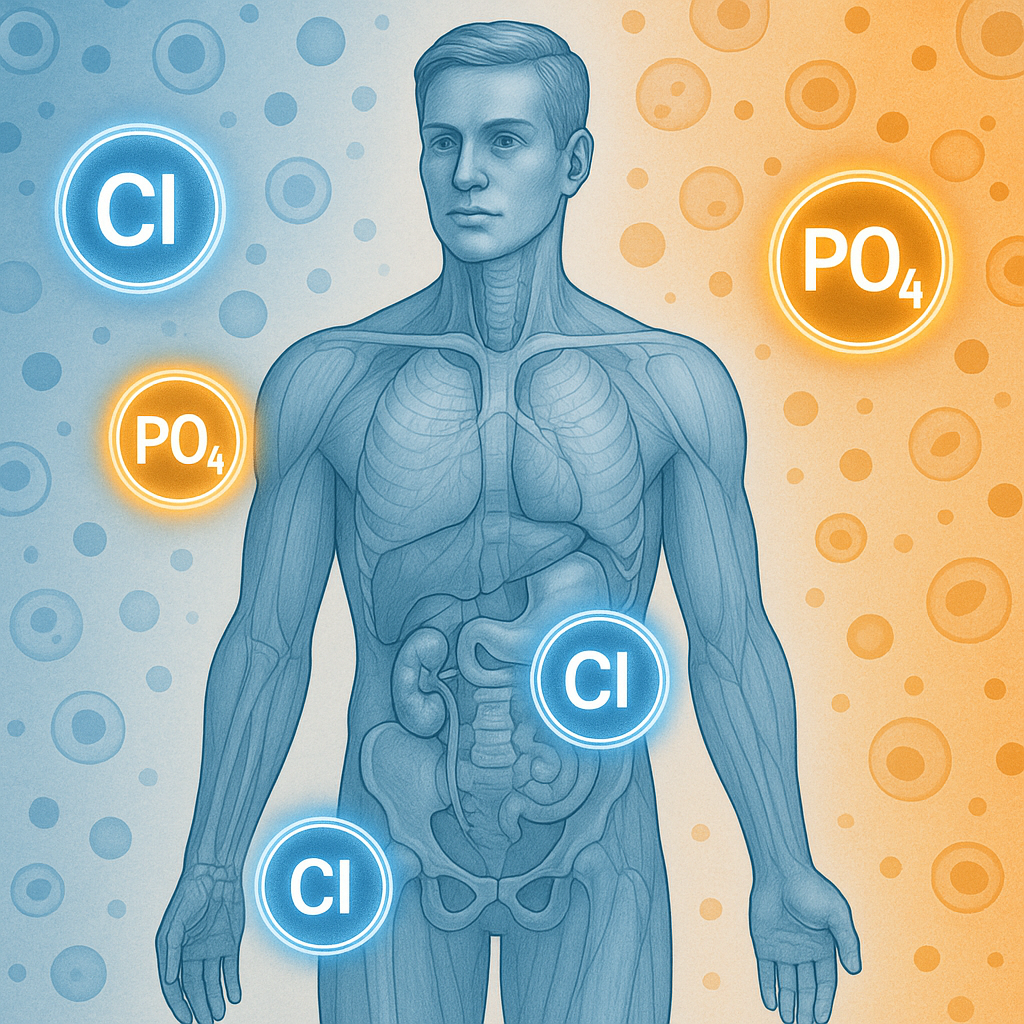When we talk about electrolytes, the usual suspects come to mind: sodium, potassium, and calcium. These elements often steal the spotlight in clinical discussions and exam reviews. But what about phosphate and chloride? Despite being equally essential for maintaining homeostasis, they are often left in the shadows. In this article, we’ll shine a light on these two “forgotten” electrolytes, diving into their functions, clinical relevance, disorders, and implications in nursing care.
What Are Electrolytes?
Electrolytes are electrically charged minerals found in bodily fluids. They help regulate nerve and muscle function, hydrate the body, balance blood acidity and pressure, and rebuild damaged tissue. While sodium, potassium, and calcium get most of the attention, phosphate (PO4³⁻) and chloride (Cl⁻) play equally crucial but less discussed roles.
Why Are Phosphate and Chloride Important?
Let’s break down why these two electrolytes are indispensable:
🧡 Phosphate: The Cellular Powerhouse Helper
Phosphate is vital for:
- Energy production: It is a key component of ATP (adenosine triphosphate), the energy currency of cells.
- Bone health: 85% of the body’s phosphate is stored in bones and teeth as calcium phosphate.
- Acid-base balance: It acts as a buffer in the blood to maintain pH balance.
- Cell membrane structure: Phosphate is part of phospholipids that make up cell membranes.
- DNA and RNA synthesis: Crucial for genetic material and cellular replication.
💙 Chloride: The Balancer
Chloride primarily functions in:
- Maintaining fluid balance: It works closely with sodium to control osmotic pressure.
- Regulating acid-base balance: Chloride is essential in forming hydrochloric acid (HCl) in the stomach and in bicarbonate-chloride exchange in red blood cells.
- Electrical neutrality: Helps maintain neutrality when other electrolytes shift.
- Oxygen-carbon dioxide exchange: Facilitates CO₂ transport in the blood via the chloride shift.
Normal Ranges
Knowing the normal reference ranges helps nurses detect abnormalities:
| Electrolyte | Normal Range (Adults) |
|---|---|
| Phosphate | 2.5 – 4.5 mg/dL |
| Chloride | 96 – 106 mEq/L |
Causes of Imbalances
Both hypophosphatemia and hypochloremia can lead to serious complications if not corrected. Understanding the causes is essential for early intervention.
🧡 Hypophosphatemia (Low Phosphate)
Causes:
- Malnutrition or refeeding syndrome
- Chronic alcoholism
- Diabetic ketoacidosis
- Antacid overuse
- Hyperparathyroidism
- Vitamin D deficiency
Symptoms:
- Muscle weakness
- Respiratory failure
- Bone pain
- Confusion
- Increased risk of infection
🧡 Hyperphosphatemia (High Phosphate)
Causes:
- Chronic kidney disease
- Hypoparathyroidism
- Excessive phosphate intake
- Rhabdomyolysis
- Tumor lysis syndrome
Symptoms:
- Muscle cramps
- Tetany (due to low calcium)
- Joint pain
- Skin itching (uremic pruritus)
💙 Hypochloremia (Low Chloride)
Causes:
- Vomiting or prolonged NG suction
- Diuretics
- Addison’s disease
- Metabolic alkalosis
- Burns
Symptoms:
- Muscle twitching
- Shallow breathing
- Dehydration signs
- Confusion
💙 Hyperchloremia (High Chloride)
Causes:
- Dehydration
- Metabolic acidosis
- Kidney disease
- Saline infusion
- Cushing’s syndrome
Symptoms:
- Fatigue
- Weakness
- Rapid breathing
- High blood pressure
Clinical Implications in Nursing Practice
1. Assessment
Nurses should recognize symptoms of phosphate and chloride imbalances and correlate them with labs and patient history.
- Monitor respiratory rate in hypophosphatemia.
- Assess for gastric losses in hypochloremia.
- Look for muscle cramps or weakness in both disorders.
- Check for acid-base disturbances and renal function.
2. Nursing Interventions
- For Hypophosphatemia:
- Administer oral or IV phosphate.
- Monitor calcium levels (risk of reciprocal hypocalcemia).
- Nutritional support for malnourished patients.
- For Hyperphosphatemia:
- Use phosphate binders.
- Restrict dietary phosphate.
- Dialysis in severe kidney failure.
- For Hypochloremia:
- Replace chloride using normal saline (0.9% NaCl).
- Monitor acid-base balance.
- Correct underlying causes like vomiting or diuretics.
- For Hyperchloremia:
- Correct dehydration.
- Switch IV fluids if needed (avoid excess saline).
- Address metabolic acidosis with sodium bicarbonate if necessary.
Electrolyte Mnemonics for Phosphate and Chloride
🧠 For Phosphate (PO4):
P – Pulmonary problems (muscle weakness)
H – Hyperglycemia, insulin shifts phosphate into cells
O – Osteomalacia (soft bones)
S – Seizures
P – Parenteral nutrition without supplementation
H – Hypokalemia and hypomagnesemia coexist
A – Alcohol abuse
T – Tissue trauma
🧠 For Chloride (Cl):
C – Chronic lung disease (linked to acid-base imbalances)
L – Losses from GI (vomiting, NG tube)
I – IV fluids (too much saline = hyperchloremia)
N – Nephritis or kidney issues
I – Increased aldosterone (causes high chloride)
C – Cushing’s syndrome
Key NCLEX Tips
- In refeeding syndrome, always monitor phosphate.
- In metabolic alkalosis, watch for low chloride.
- Treat hypophosphatemia before starting enteral feeds in malnourished patients.
- Chloride follows sodium—if sodium is abnormal, chloride often is too.
- Watch for inverse relationship between phosphate and calcium.
Patient Education Tips
Nurses play a critical role in educating patients, especially those with chronic conditions:
- Renal patients: Avoid high phosphate foods (dairy, meats, colas).
- Alcohol-dependent patients: Supplement phosphate and thiamine.
- Patients on diuretics: Monitor and replace chloride.
- Low-phosphate diets: Educate patients on hidden sources like soft drinks.
Foods Rich in Phosphate and Chloride
🍽️ High-Phosphate Foods:
- Dairy products
- Meats and fish
- Nuts and seeds
- Whole grains
- Colas and soft drinks (contain phosphoric acid)
🍽️ High-Chloride Foods:
- Table salt (NaCl)
- Seaweed
- Rye
- Tomatoes
- Processed and canned foods
Final Thoughts
Phosphate and chloride may be the unsung heroes of electrolyte balance, but they are far from insignificant. They play vital roles in cellular energy, acid-base regulation, and skeletal integrity. As nurses, understanding and managing these electrolytes can greatly impact patient outcomes, especially in critical care, nephrology, and nutrition.
Rather than being forgotten, phosphate and chloride deserve their rightful place in nursing practice and education. Keeping a close eye on them—just like we do for potassium and sodium—can make all the difference.

